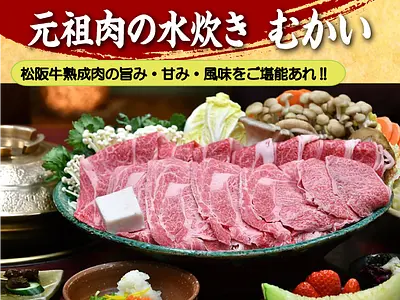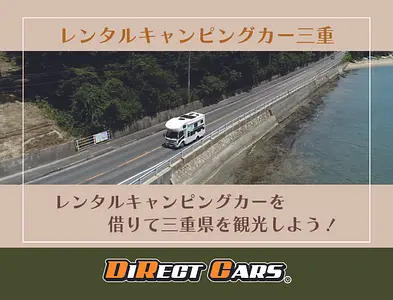What is Kameyama 7th troupe “Sengatake”? Introducing attractions, parking lots, and climbing courses
掲載日:2022.02.08
Mt. Sengatake consists of two peaks, the east peak and the west peak, and is a mountain characterized by wonderful views and a variety of climbing routes. Introducing the parking lot location, Mt. Sengatake mountain climbing course, and many highlights!
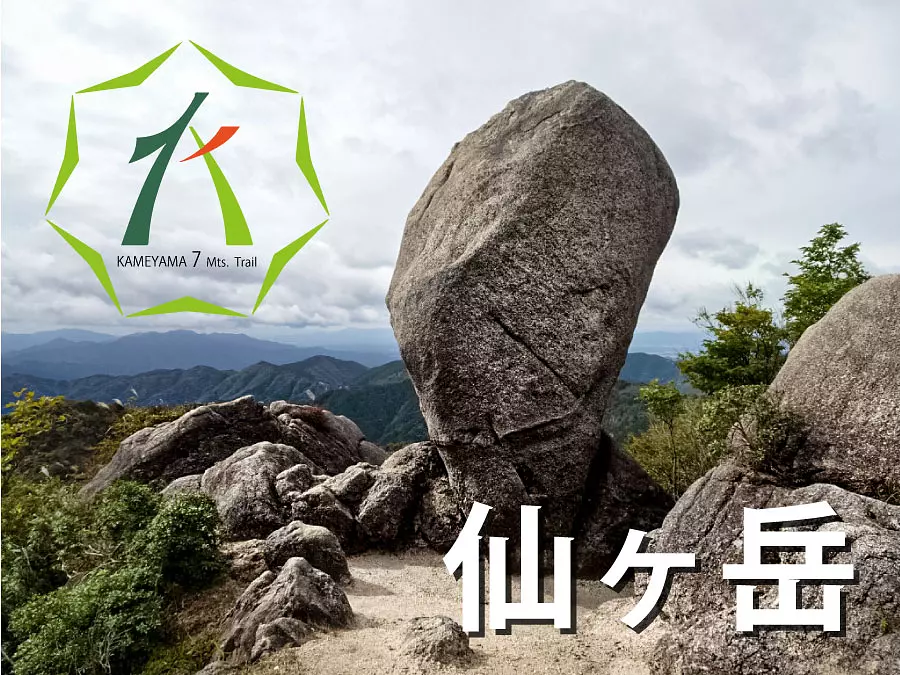
Fugamaru-chan from the Mie Travel Camera Club delivers information that will make you love Mie even more! This time, the theme is Mt. Sengatake, one of Kameyama's 7 temples.
table of contents
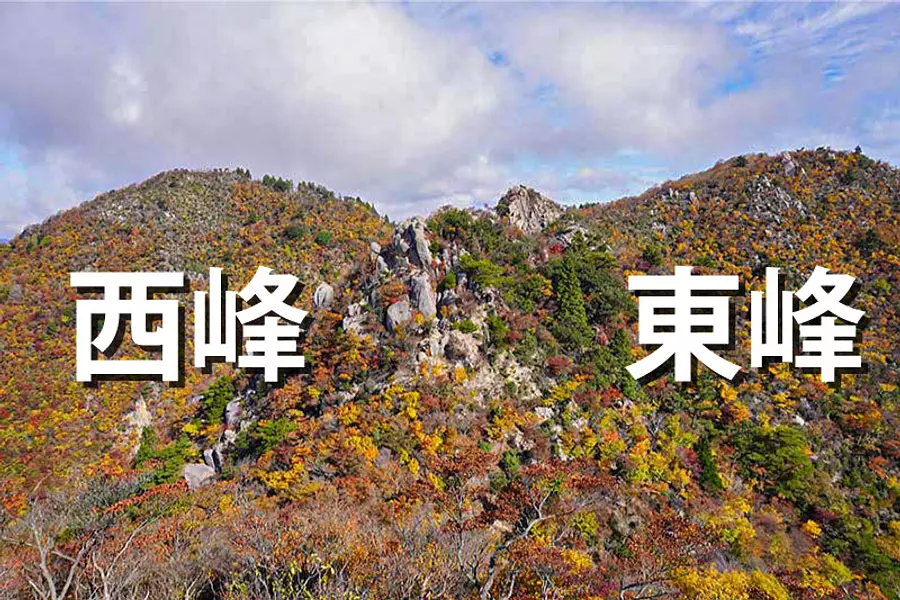
What is Mt. Sengatake?
Sengatake is a mountain consisting of two peaks, east and west, in the southern part of the Suzuka Mountains, which straddles KameyamaCity and SuzukaCity in Mie Prefecture, and Koka City in Shiga Prefecture. The west peak is 961 meters high, making it the highest of the seven Kameyama mountains.
*Kameyama 7-za is a mountain that is around 700m in KameyamaCity and has been certified as Kameyama 7-za.
Highlights and charms of Mt. Sengatake
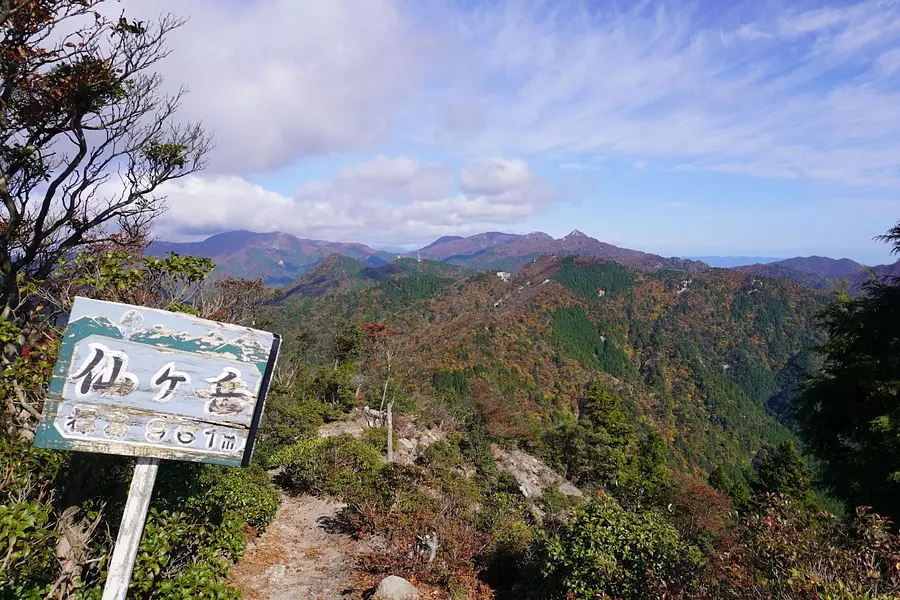
Enjoy a variety of views
There are various viewing spots along the mountain trail of Mt. Sengatake, and you can see the mountains of the Hokusei area of Mie Prefecture from every angle.
From the summit (west peak) where the Mt. Sengatake signboard stands, you can look out over Mt. Takahata, Mt. Mitsugoyama, Mt. Shiosoyama, and Mt. Usukigadake, which are the 7 Kameyama mountains. It is also a superb view point where you can see Mt. Amagoidake, Mt.Gozaisho, and Mt. Kamagadake of the Suzuka Seven Mountains.
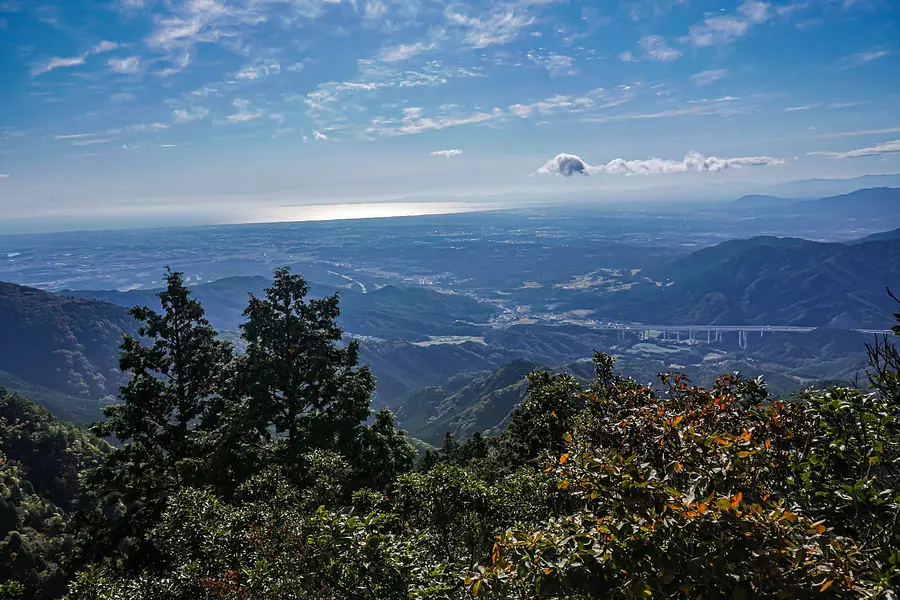
From the south ridge course, there are spots where you can see the Hokusei area of Mie Prefecture, the Nakasei area, and Ise Bay, and you can also see the Shin-Meishin Expressway that cuts through the mountains below.
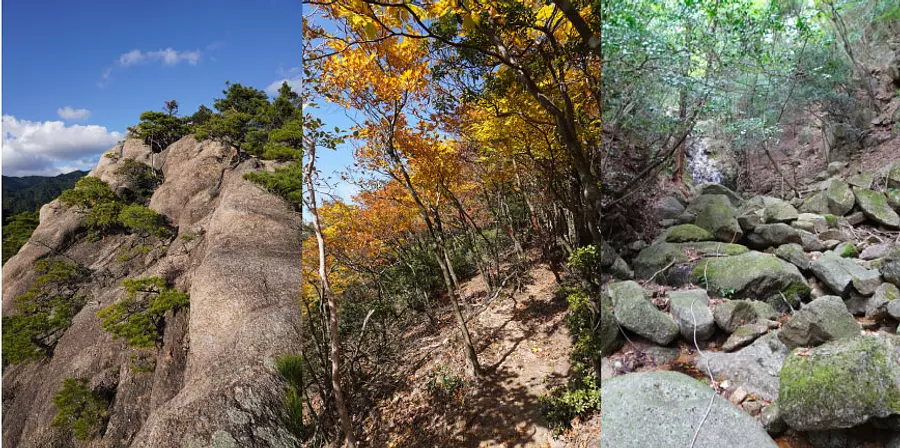
A variety of mountain trails and the beauty of the four seasons
It is characterized by a variety of mountain trails, including rocky areas, ridges, valleys, and forest roads, allowing you to experience the various variations that can be expected in mountain climbing all at once.
Along the way, you can see the scenery of each season, with flowers such as red palm and white palm blooming from April to June, and the entire mountain turning in autumn colors in autumn.
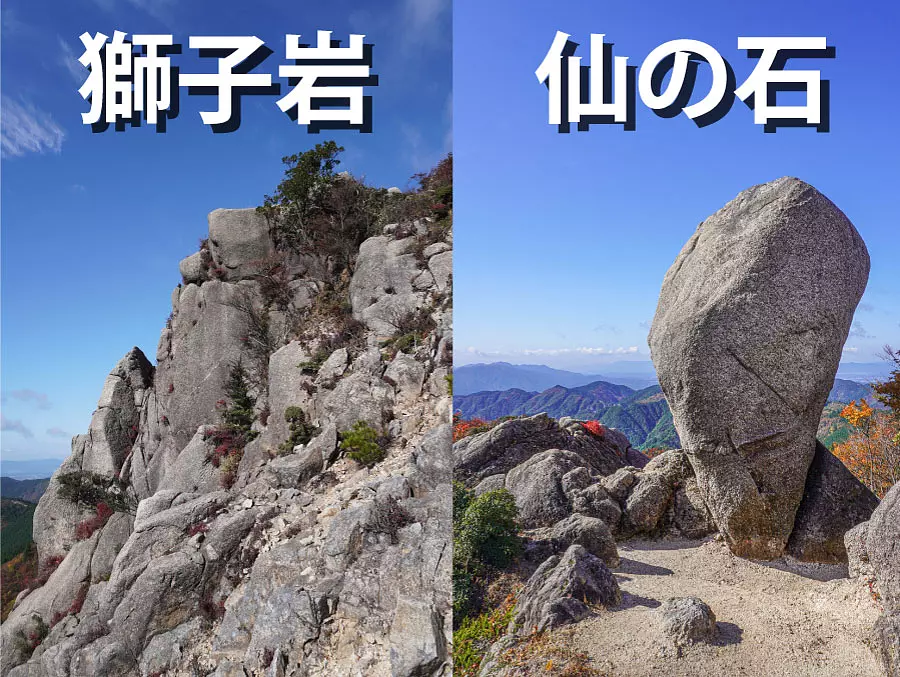
A number of strangely shaped rocks
Near the eastern peak, there are many strange-looking rocks, and the rocky peak called Shishiiwa is especially spectacular.
Beyond Shishiiwa is the ``Sen-no-Ishi'', which is said to be the symbol of Mt. Sengatake, and the sight of large vertical stones towering over you is overwhelming.
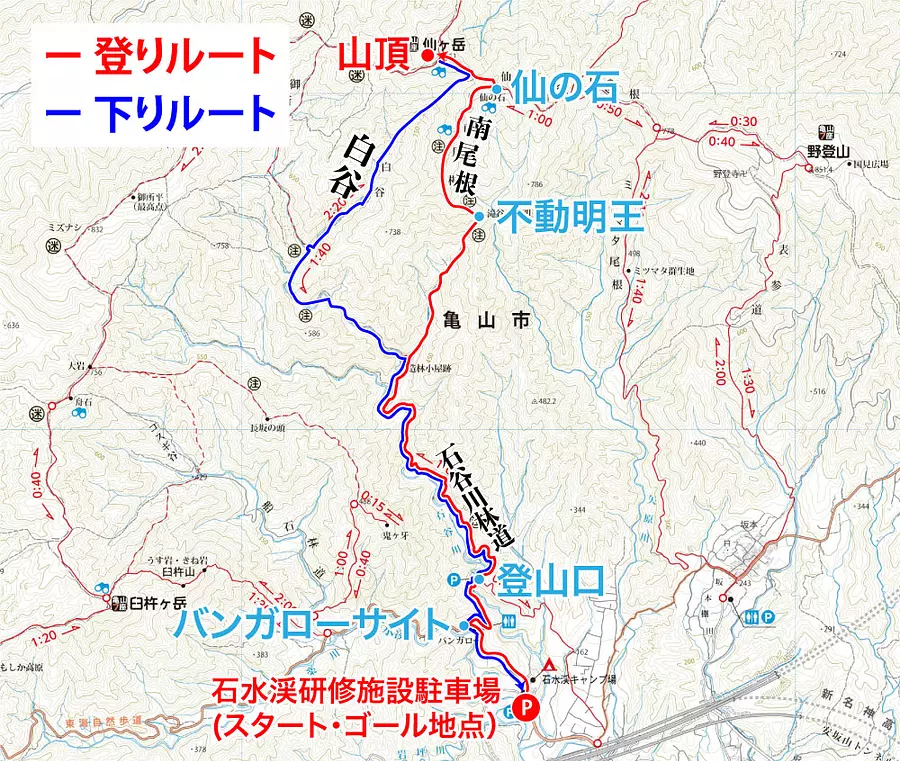
Climbing course overview
This article introduces the "Minami-ridge-Shiratani course" based on the climbing course on the Kameyama 7-za trail map!
The course time is about 5 hours, with a break of about 1 hour, making it a total of about 6 hours of climbing.
Climbing course plan
Start from the Sekisuikei training facility parking lot and arrive at the trailhead via the forest road near the bungalow site. From there, proceed along the south ridge course via the Ishitani River Forest Road, and walk along the ridge from Fudo Myoo Col, aiming for ``Sen no Ishi'' and the summit of Nishimine.
[Climbing route] Parking lot (7:00) → South ridge (7:56) → Sen-no-Ishi (09:58) → West peak (10:22)
Downhill course plan
After taking a lunch break at the summit of Nishimine, descend through the Shiratani course and return to the Sekisuikei Training Facility parking lot to reach the finish line.
[Down route] Nishimine summit (11:22) → Shiratani course (11:32~) → Parking lot (13:30)
Course difficulty: Super advanced
The Minami-ridge/Shiratani course offers a variety of mountain trails and many wonderful views, but it is a course for advanced mountain climbers as there are parts of the course where you have to walk on poor footing, crumbling ground, and climb rocky areas. . Rather than going alone, go with someone who is experienced in mountain climbing.
- Precautions and tips for mountain climbing
- ① When climbing, give yourself plenty of time and choose a mountain that suits your experience and physical strength.
- ② Make a climbing plan in advance and submit a climbing report to the nearest police station or mountain climbing post by the day of the climb.
- ③ There are parts of this mountain climbing course that pass along rivers, so it may be impossible to pass due to rising water after heavy rain. Be sure to check the weather information in advance.
- ④ Prepare clothing that can handle sudden changes in temperature, including rain gear.
- ⑤ Bring water and portable food, take precautions against heat stroke, and take adequate breaks.
- ⑥ When climbing the mountain in winter, be sure to bring snowy mountain climbing equipment such as crampons. Even if there is no snow at the foot of the mountain, there may still be snow and ice near the top of the mountain.
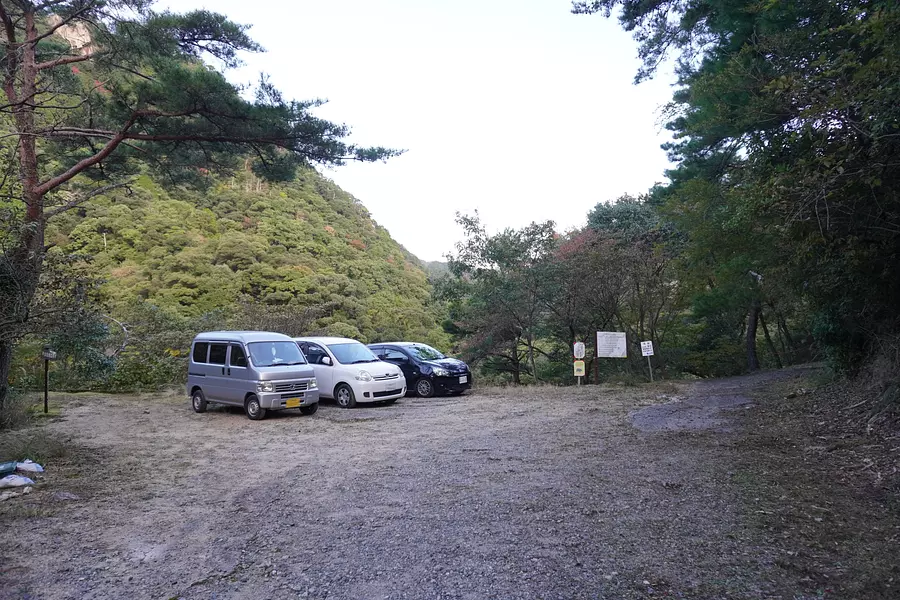
Parking location
The best parking lots for this climbing course are the Sekisuikei Training Facility parking lot and the trailhead parking lot above the sabo dam. *The image is the parking lot at the trailhead.
The parking lot at the trailhead can accommodate only about 5 cars, and since you will be going through a forest road that your car's navigation system won't recognize, we recommend the Sekisuikei Training Facility parking lot, which has a large number of parking spaces.
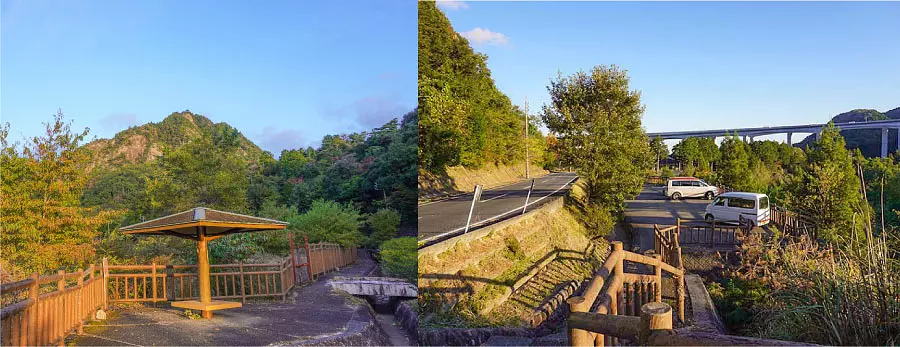
If the Sekisuikei Training Facility parking lot is crowded, there are parking spaces for about 5 cars along the road nearby. The image above is the parking space, and the gazebo attached is the landmark.
The climbing course introduced in this article starts from the Sekisuikei training facility parking lot.
*The Sekisuikei Training Facility parking lot is managed by Sekisuikei Campsite. During seasons when the campground is busy, use the parking lot at the trailhead or the parking space marked by the gazebo.
Climbing course explanation
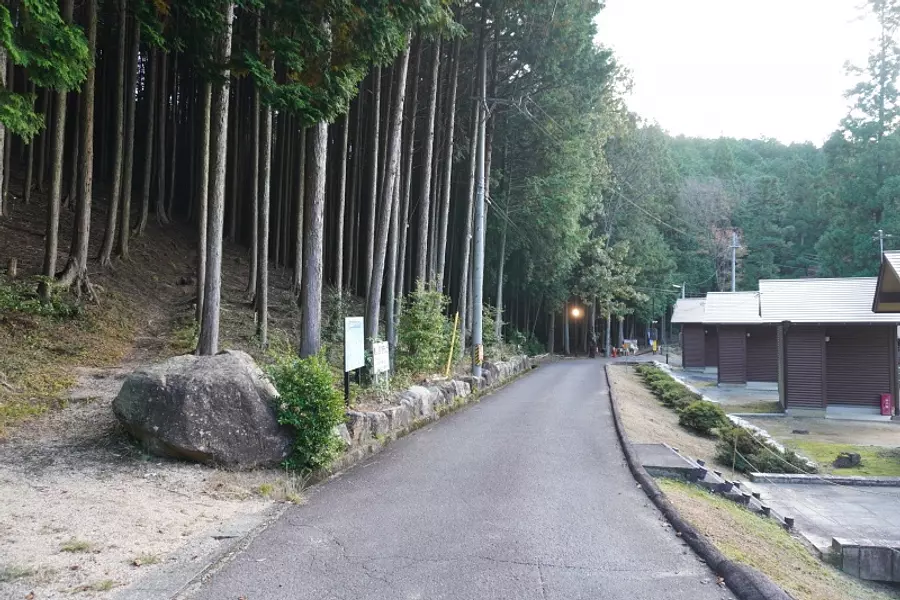
Bungalow site (07:09)
The forest road opposite the bungalow site at Sekisuikei Campground is the route that leads to the trailhead. There is a Sekisuikei guide map sign at the entrance to the forest road, so it's a good idea to use that as a landmark. There are also toilets nearby.
Walk: about 4 minutes
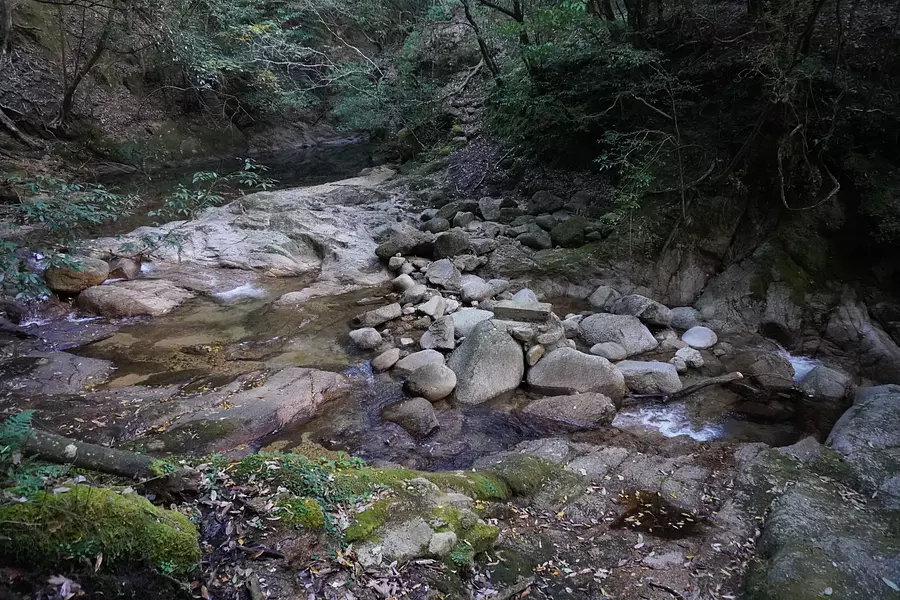
Ishitani River Forest Road (07:13)
At the end of the forest road is the Ishitani River, which you cross by walking on the stones of the riverbed. Then, you will see the junction between Mitsubuchi and Shiraito Falls, so proceed to Mitsubuchi and you will arrive at the trailhead.
Walk: about 5 minutes
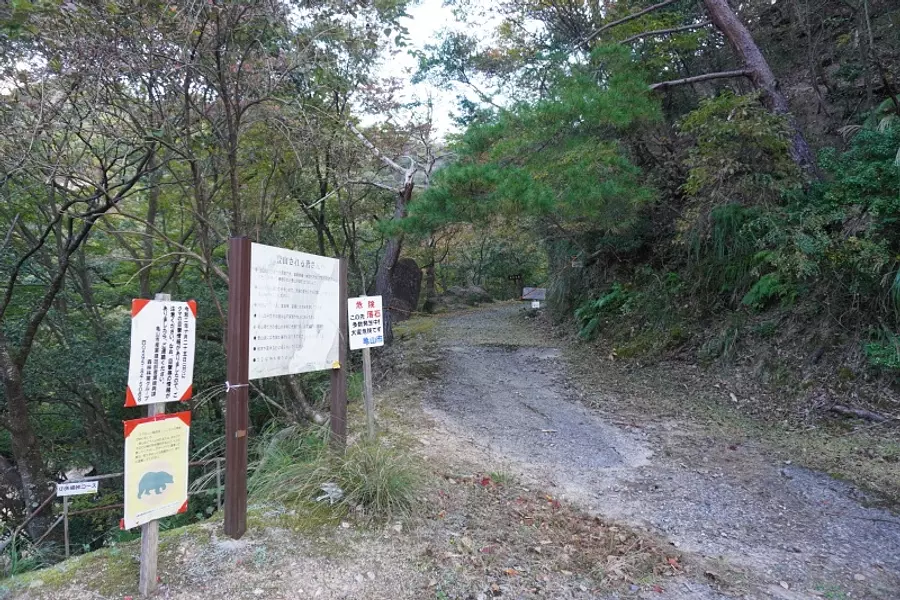
Trailhead (07:18)
We arrived at the trailhead. There is a signboard with information about mountain climbing, and the forest road that follows it is the mountain trail. There are falling rocks and collapsed areas along the way, so be careful.
Walking: Approximately 38 minutes
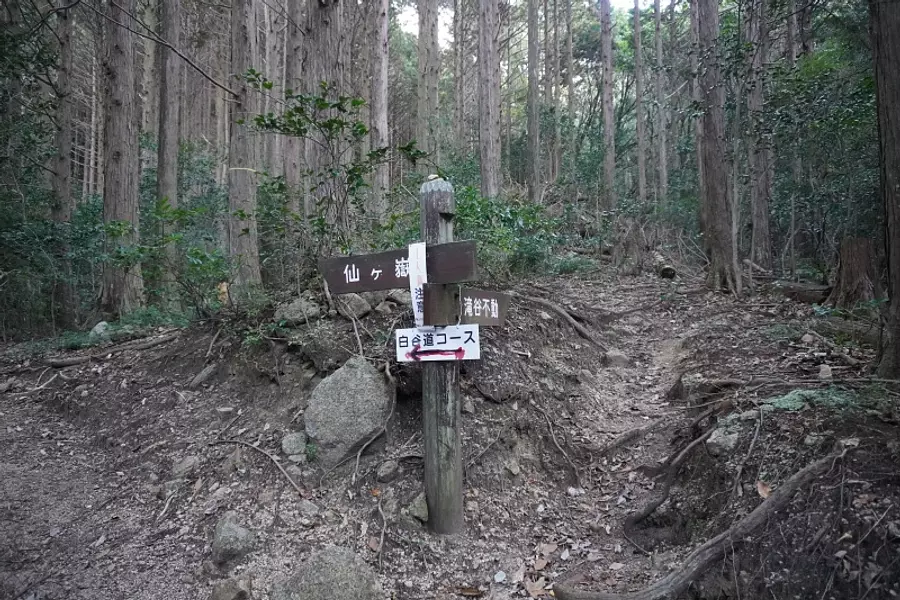
Minami ridge course/Shiratani course branch (07:56)
We arrived at the junction between the Minami-ridge course and the Shiratani course. This time, the uphill course will be the south ridge course, so turn right here. On the way back, I descended from the summit of Nishimine, taking the Shiratani course, and returned here.
Walk: about 2 minutes
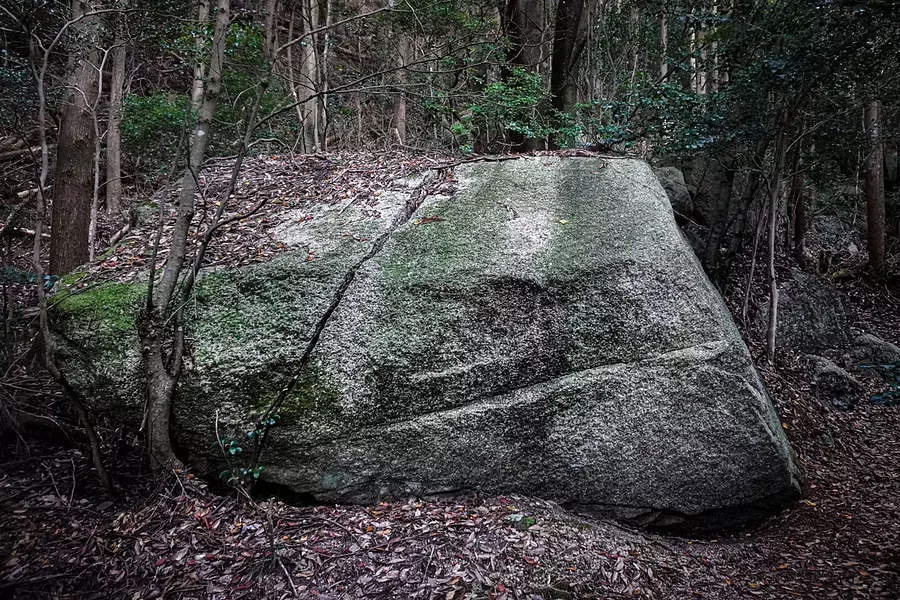
A large rock that Tanjiro may have cut (07:58)
Beyond the fork is a large rock split in two. I have arbitrarily named this rock ``the large rock that Tanjiro might have slashed'' (lol). Tanjiro is the main character that appears in the currently popular "Demon Slayer: Kimetsu no Yaiba," and a similar large rock appears in the movie. In the future, this place may become a hot topic as a rare sight.
Walk: about 15 minutes
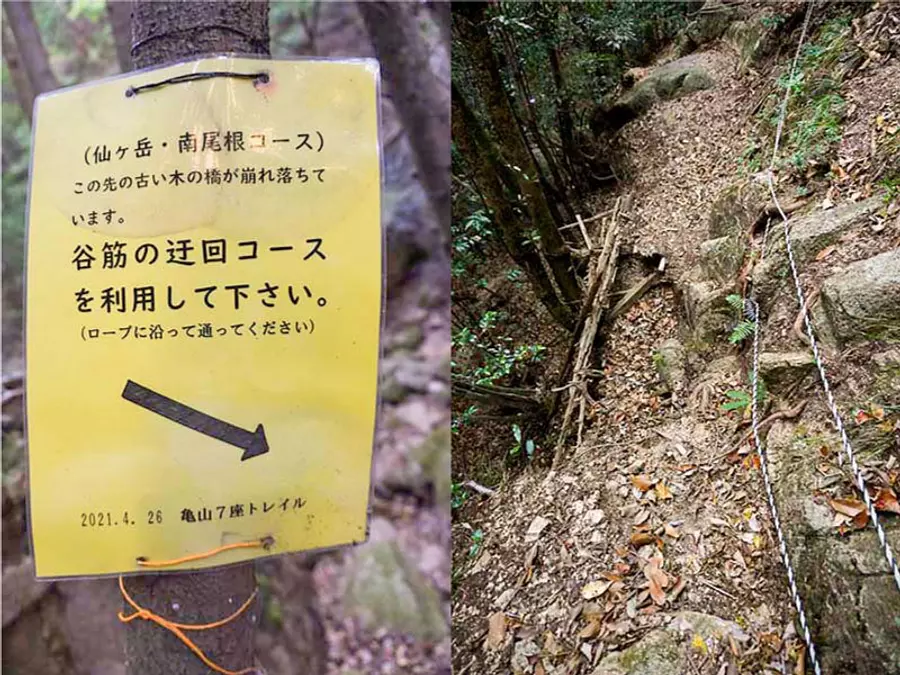
Tanisuji circuit course (08:13)
There is a part where the wooden bridge that was there before has collapsed, so you have to proceed through the valley route. Let's proceed along the rope set in the valley.
Walk: about 8 minutes
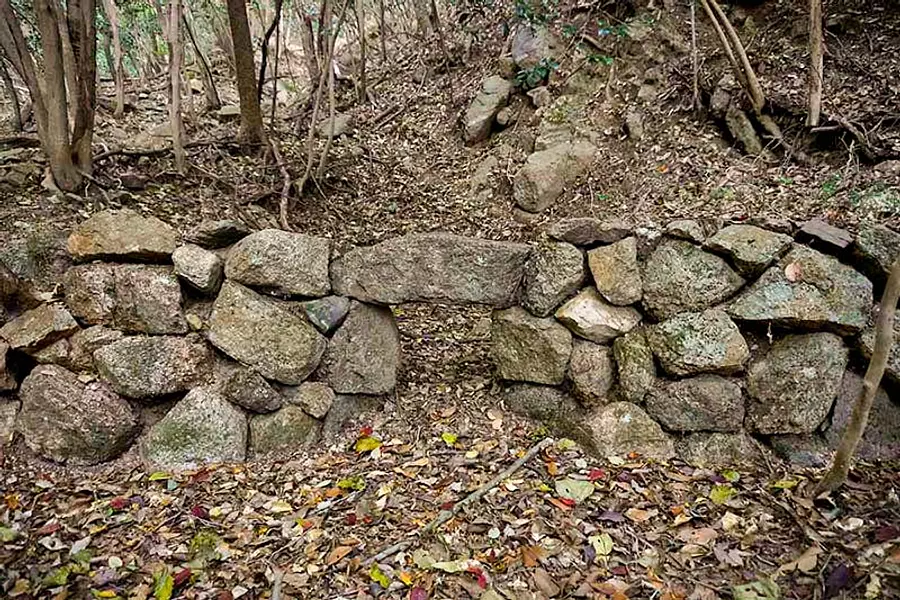
Charcoal kiln ruins (08:21)
This is the remains of a charcoal kiln, with the stones of the fire pit still intact. At a time when charcoal was essential to life, it is thought that people made charcoal here to make a living. By the way, Tanjiro worked as a charcoal burner, and there is a mountain called Onigaga nearby, so KameyamaCity has elements that make you think of Demon Slayer: Kimetsu no Yaiba.
Walking: Approximately 11 minutes
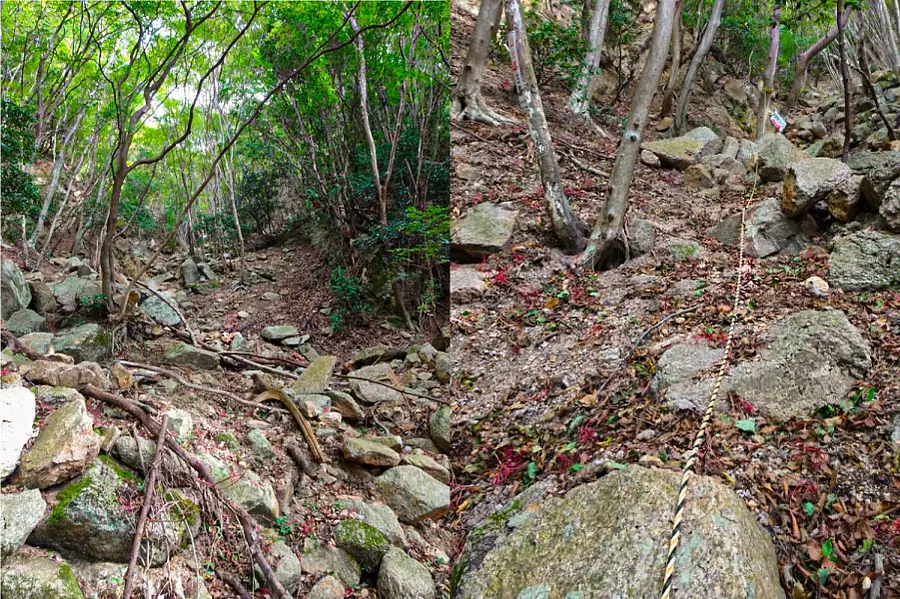
Itahashi Valley (08:32)
Climb up the valley road to the confluence of the south ridge. There are trap ropes along the steep slopes, so make use of them and watch your step.
Walk: about 16 minutes
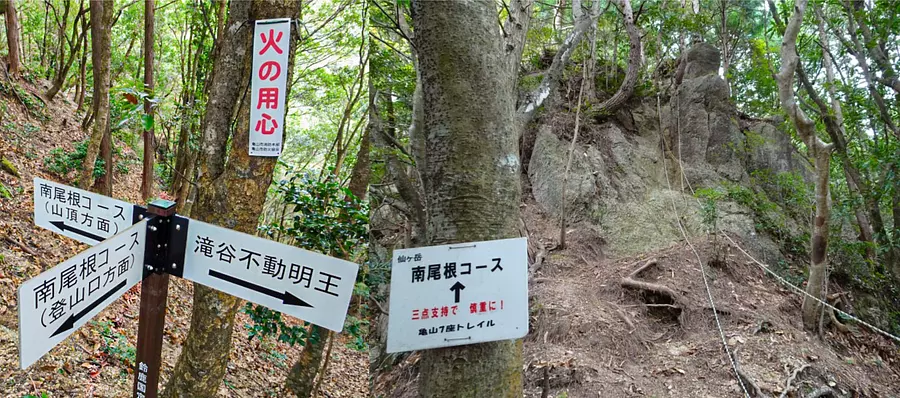
Confluence point on the south ridge (08:48)
From here we will continue towards the mountaintop, but if you have time, you should stop by the Fudo Myoo Statue. There are some rocky areas to climb towards the summit, so make sure you have three-point support and hold on to stable rocks and thick tree roots as you climb. The provided tiger rope is only an auxiliary role, so don't rely on it too much.
Walk: Approximately 21 minutes
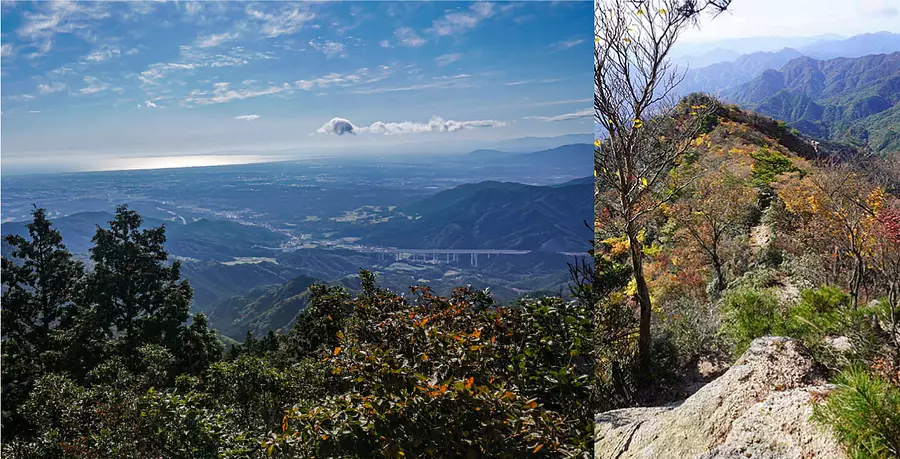
View from the south ridge (09:09)
After climbing up the rocky area, you will reach a ridgeline with a panoramic view of Ise Bay. It is a scenic route with wonderful views from here to the top of the mountain ♫
Walk: Approximately 23 minutes
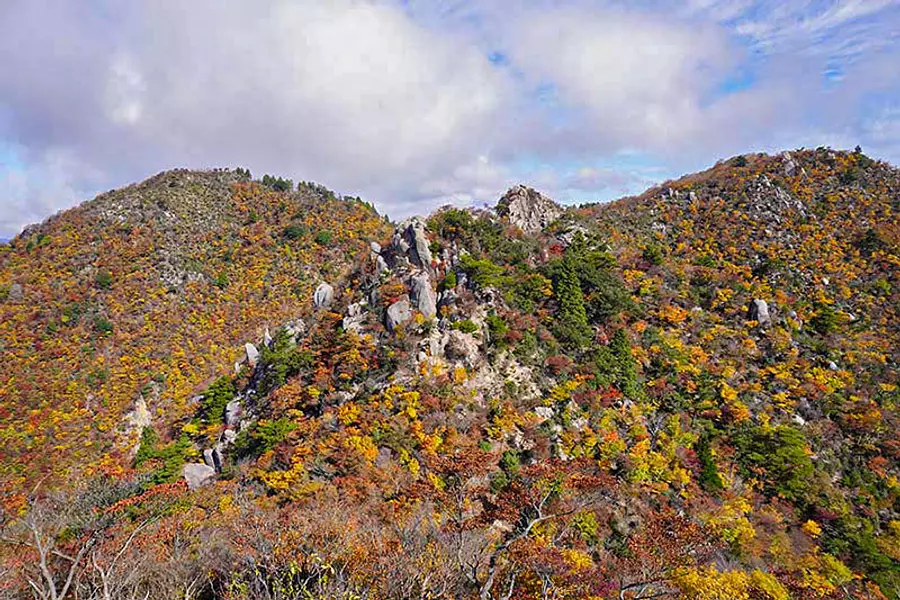
Overlooking the summit of Mt. Sengatake (09:32)
As you continue walking along the ridge, the summit of Mt. Sengatake gradually approaches. In the photo above, the west peak is on the left, and the east peak is on the right. The rock in the middle is a rocky peak called Shishiiwa.
Walk: about 18 minutes
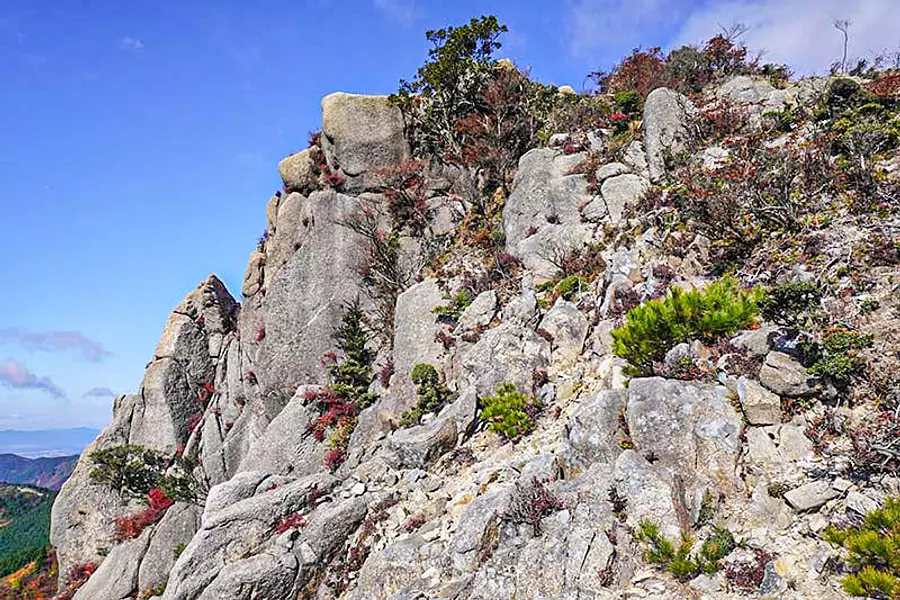
Shishiiwa (09:50)
I came close to Shishiiwa. It is a mysterious sight with huge rocks rolling around on top of the mountain. The view from Shishiiwa is also spectacular, so we recommend taking a short break and enjoying the view. Just past Shishiiwa is Sen-no-Ishi.
Walk: about 8 minutes
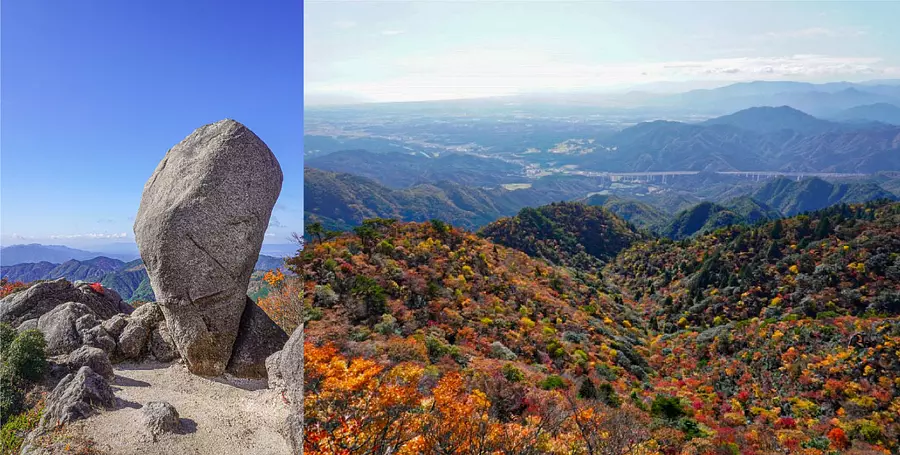
Sen no Ishi (09:58) *10 minute short break
After walking for about 2:30 from the trailhead, we arrived at Sen-no-Ishi! You will be overwhelmed by the sight of large vertical rocks standing alone. From here, you can enjoy a spectacular panoramic view, and in autumn you can see the mountain slopes turn bright red.
Walk: about 1 minute
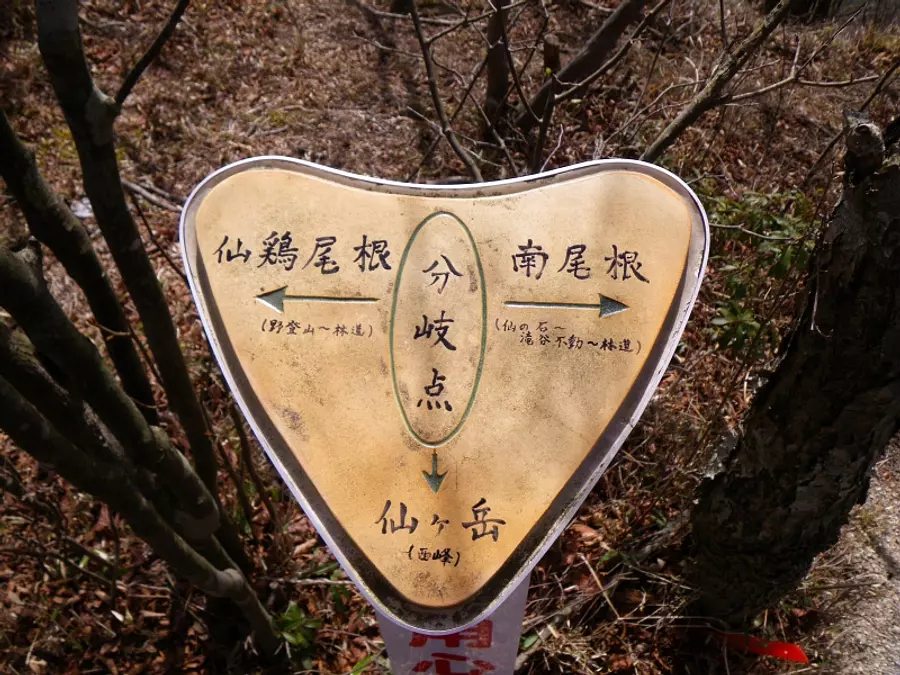
Branching of Sengei ridge, South ridge and West peak (10:10)
There is a fork in the road right near Sen-no-Ishi, and the next step is towards Mt. Sengatake (west peak). ``Minami-one'' is the path we have taken so far, and ``Sengei-one'' is the route that leads to Nonoboriyama, the 7th mountain peak of Kameyama.
Walk: about 3 minutes
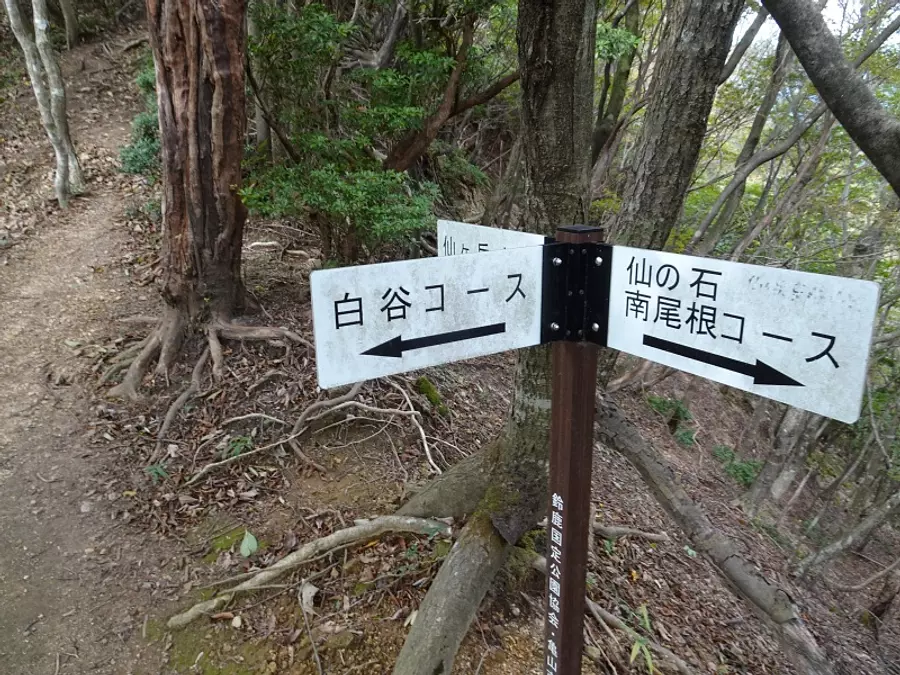
Turning point of Shiratani course (10:13)
There is a fork in the Shiratani course on the way to Nishimine. After going to the west peak, return to this junction and descend via the Shiratani course.
Walk: about 9 minutes
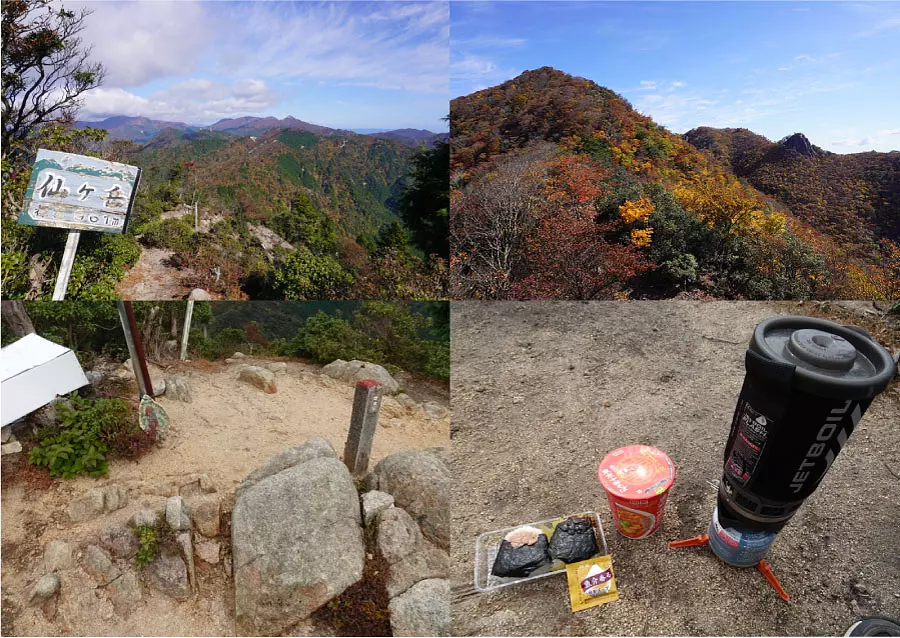
Summit of Nishimine (10:22) *1 hour break
Arrived at final destination! There is a signboard that says 961m above sea level, and the view from here is outstanding! You can see the Suzuka Seven Mountains and Kameyama Seven Mountains. Since the foothold is wide, we took a lunch break here♫ After recovering our physical strength while enjoying the spectacular view, we returned to the junction of the Shiratani course.
Walk: about 7 minutes
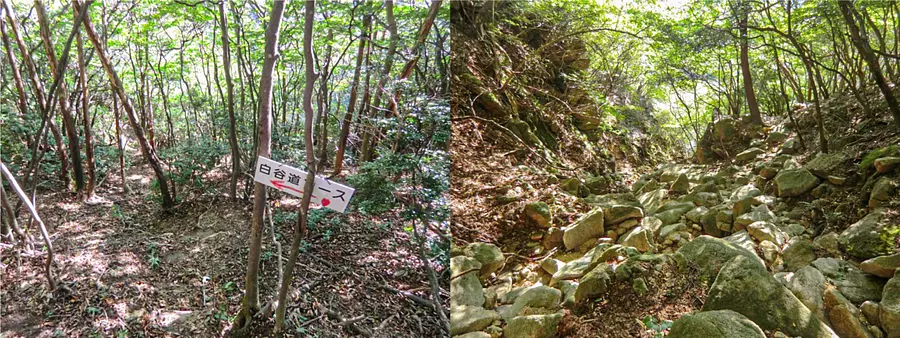
Shiratani course (11:32)
Descend via the Shiratani course. Along the way, there are steep valleys and streams with rolling stones underfoot, so be careful while descending by supporting your body with poles.
Walk: about 30 minutes
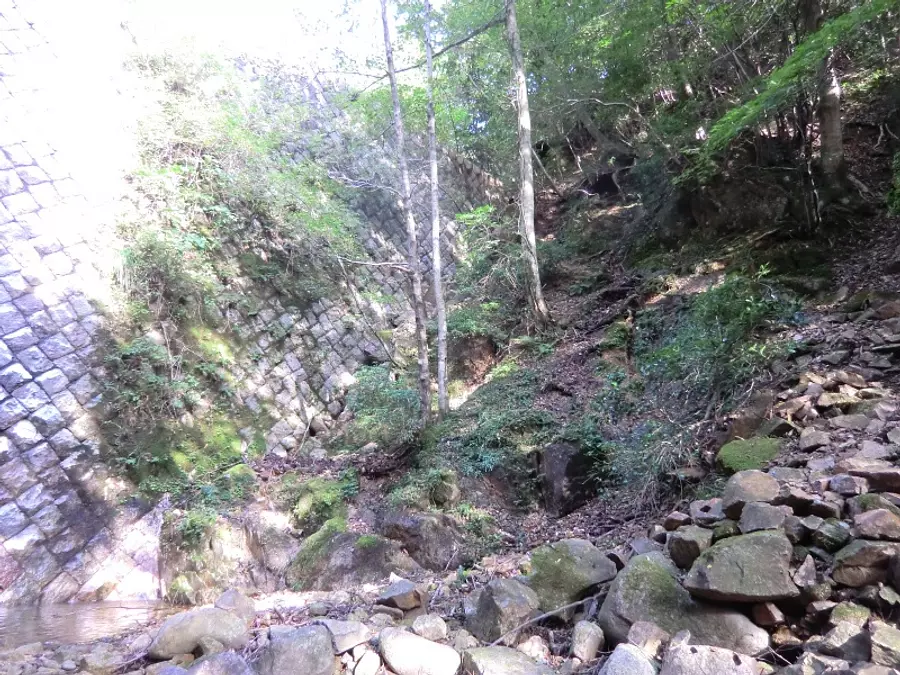
Sabo dam (12:02)
The valley that continued downhill has ended, and from here we continue along the side road of the sabo dam. There are parts of the mountain trail that have collapsed, so please proceed with caution.
Walk: about 20 minutes
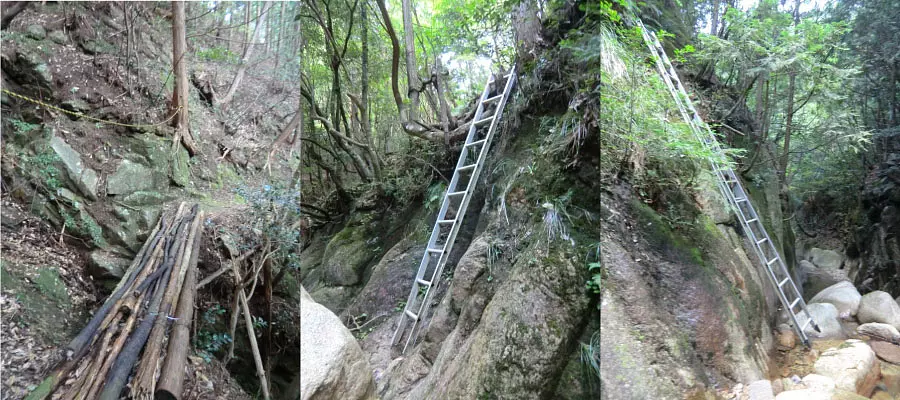
Climb through the mountain with wooden bridges and ladders (12:22)
There are 3 thrilling wooden bridges, and there is a part where you have to go down the valley and climb up the mountain, so proceed with caution. *Going through the mountain: The mountain trail was washed away by heavy rain and collapsed, so a detour route was taken through the valley using a ladder.
Approximately 25 minutes
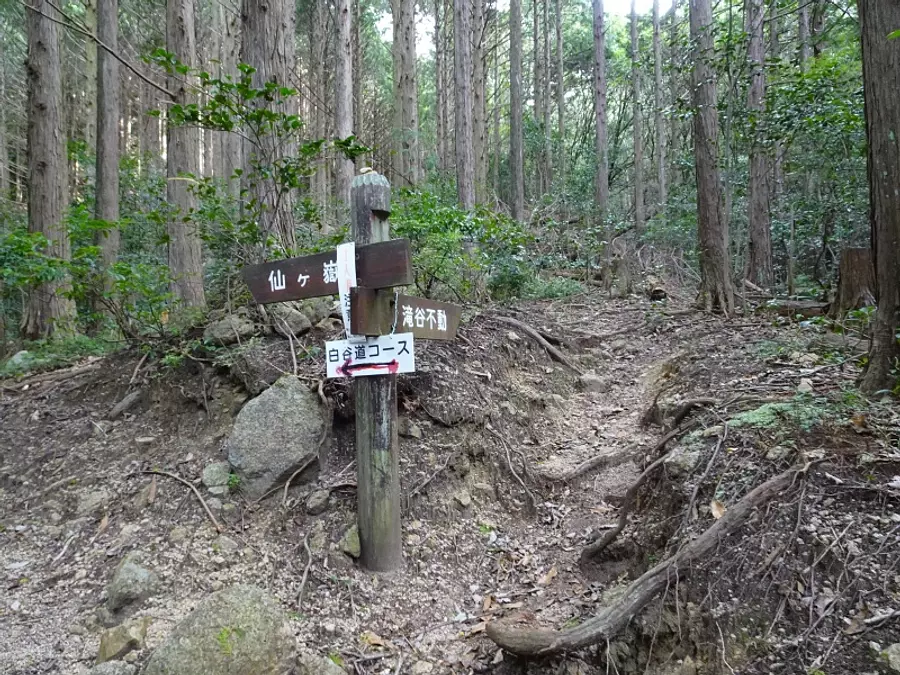
Minami ridge course/Shiratani course junction (12:47)
I returned to the first fork in the road. The appeal of the Minami-ridge to Shiratani course is that you can follow different routes for climbing and descending. Let's return to the parking lot through the Ishitani River Forest Road and head home.
Walk: Arrive at parking lot in about 40 minutes
What did you think
We have introduced the charm of Mt. Sengatake along with an introduction to the mountain climbing course! Among the 7 Kameyama mountains, Mt. Sengatake offers an outstanding view and a variety of mountain trails, making it perfect for those who want to enjoy a variety of trails.
The round-trip climbing course will take more than 5-6 hours, so if you are traveling far, we recommend staying at the Sekisuikei campsite. Please see the official website of Sekisuikei Campsite for bungalow fees and campsite usage fees.
Enjoy Kameyama 7-za Trail
Mie Kanko has released a special website for the Kameyama 7-za Trail that introduces the charms of Kameyama 7-za and the climbing courses for each mountain. We introduce the charms of the 7 Kameyama mountains and the climbing courses for each mountain.
In addition, ASOBISIA from the Mie Travel Camera Club has written an article about the charms of the Kameyama 7-za Trail. You can see all the attractions of each mountain on one page, so please take a look.
Latest information on Kameyama 7-za Trail
KameyamaCity 's official homepage provides the latest information on initiatives and events for the Kameyama Seven Trails.
It clearly states where to download the mountain climbing notification and where to submit the mountain climbing notification, so please read this if you are going to Kameyama 7za. You can also download the Kameyama 7-za trail map.
About the author of the article

Fugamaru-chan (article production)
He is a member of Mie Tourism's Mie Travel Camera Club and is active mainly on Twitter and Instagram as a photographer who takes pictures of Mie. We operate the Mie Photo Gallery, which distributes Mie's scenery for free, and the Mie Eetoko Tour, which disseminates Mie's latest information.

kazenami (photography)
Fugamaru-chan's father. A mountain man who has climbed all the mountains in Mie Prefecture and not only does trekking, but also rock climbing, ice climbing, and shower climbing. My hiking records so far are now available on YamaReco.
| Category | |
|---|---|
| area |



